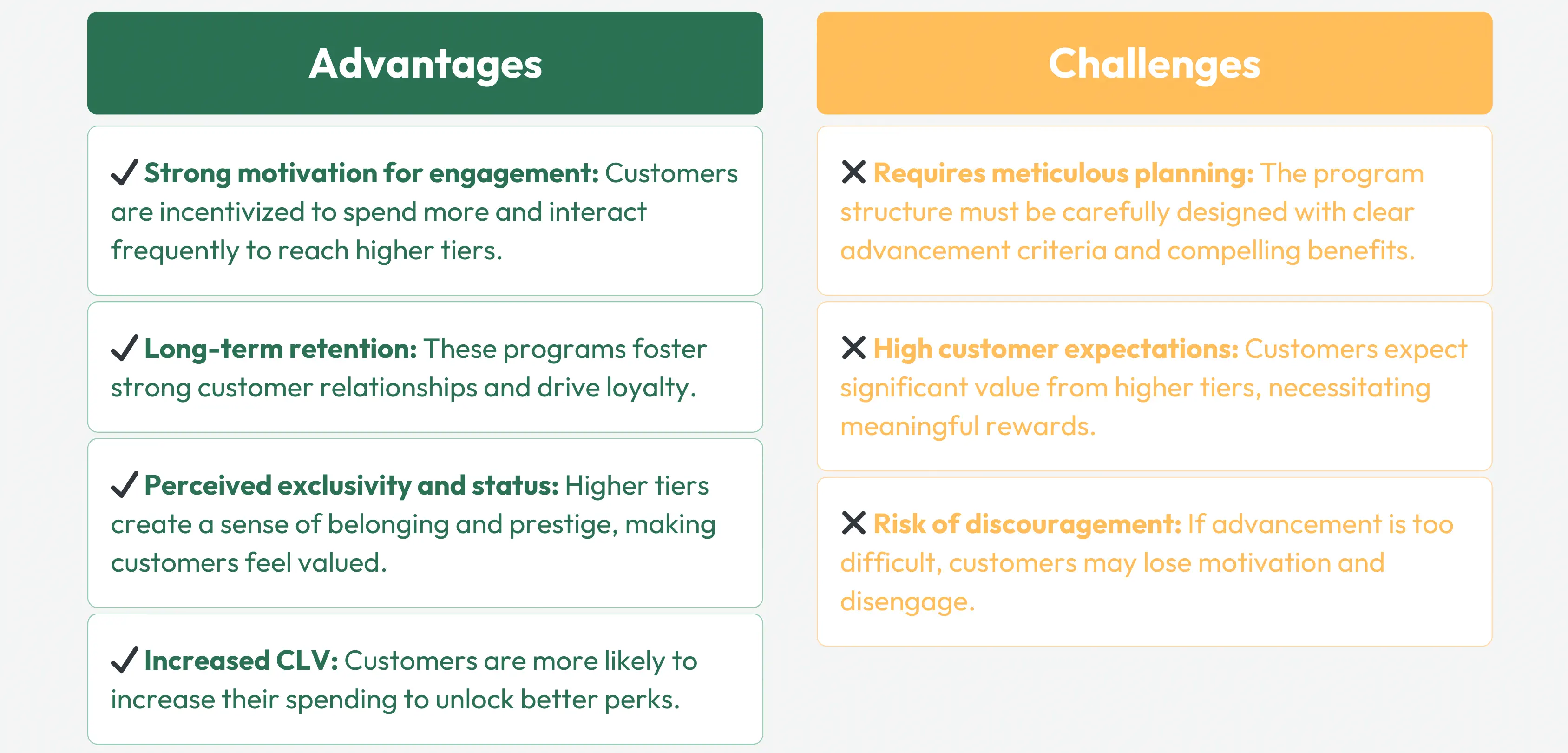Daily Pulse: Global Insights
Your daily source for news and insightful information from around the globe.
Digital Loyalty Mechanics: The Secret Sauce for Brand Devotion
Unlock the secrets of digital loyalty mechanics and discover how to transform casual customers into devoted brand advocates!
Unlocking Customer Retention: How Digital Loyalty Mechanics Drive Brand Devotion
In today's competitive marketplace, brands are constantly seeking innovative ways to enhance customer loyalty. Digital loyalty mechanics have emerged as a key strategy for driving deeper brand devotion among consumers. By utilizing tools like mobile apps, personalized rewards, and targeted communication, businesses can create engaging and interactive experiences that not only reward repeat purchases but also foster a sense of community. For instance, implementing a tiered loyalty program where customers earn more benefits as they spend more can significantly motivate consumers to choose your brand over others. This strategic approach not only increases sales but also builds long-term relationships grounded in trust and satisfaction.
Moreover, leveraging data analytics to understand *customer behavior* is crucial in optimizing these digital loyalty programs. Brands can analyze purchase history, preferences, and engagement patterns to tailor offers and communications that resonate with their audience. As customers receive personalized rewards that reflect their individual experiences, their emotional connection to the brand intensifies. According to recent studies, companies that effectively implement digital loyalty mechanics experience a notable increase in customer lifetime value and advocacy, transforming casual buyers into passionate brand ambassadors. Thus, unlocking customer retention through these innovative strategies is not just an option; it's an imperative for sustainable growth.

Counter-Strike is a popular tactical first-person shooter game that has captivated gamers since its release. Players compete in teams to complete objectives, such as planting or defusing a bomb. If you're looking for some exciting gameplay, don't forget to check out the stake promo code for extra benefits. The game's competitive nature and community have contributed to its lasting legacy in the esports arena.
The Psychology Behind Digital Loyalty Programs: Why They Matter
Digital loyalty programs leverage the principles of psychology to foster lasting relationships between brands and consumers. One key element is the concept of reciprocity, where customers feel compelled to return the favor when they receive rewards or benefits. This mutual exchange not only enhances customer satisfaction but also encourages repeat purchases. According to a recent study, participants were significantly more likely to engage with brands that offered personalized rewards, demonstrating how tailored experiences can positively influence consumer behavior. The emotional connection established through these programs often translates into a higher likelihood of advocating for the brand, which further amplifies loyalty.
Another crucial psychological aspect at play in digital loyalty programs is the principle of commitment. Customers who actively participate in loyalty schemes often feel a stronger allegiance to the brand, diminishing the chance of switching to competitors. This is particularly evident in tiered programs where customers can see their progress and feel motivated to reach the next level. As they invest more time and resources, their emotional commitment deepens. Additionally, the use of gamification elements such as points, badges, and leaderboards can tap into basic human instincts for competition and achievement, making customers more engaged and likely to return. Ultimately, understanding these psychological triggers is essential for businesses aiming to create effective digital loyalty programs that resonate with their audience.
Are Your Loyalty Programs Too Complicated? Simplifying the Path to Brand Devotion
In today’s competitive market, companies are leveraging loyalty programs to cultivate lasting relationships with their customers. However, a surprising number of these programs can be seen as overly complicated, leading to frustrated consumers who may abandon their efforts before they see the rewards. Simplifying the path to brand devotion is crucial. Customers should easily understand how to earn and redeem points, the value of their rewards, and the program's benefits. Common pain points include:
- Complex point systems that are hard to track
- Redemption processes that are not straightforward
- Lack of clear communication about program updates or changes
To enhance customer engagement and encourage brand loyalty, businesses need to streamline their loyalty programs. This begins with a clear and concise program structure that easily conveys the rules and benefits. Utilizing intuitive designs, such as user-friendly apps or websites, can significantly improve customer comprehension. Moreover, consider implementing regular feedback loops to understand customer preferences and perceptions. By focusing on these elements, brands can transform their complicated loyalty programs into simplified strategies that foster dedication and trust, ultimately leading to enhanced customer satisfaction.